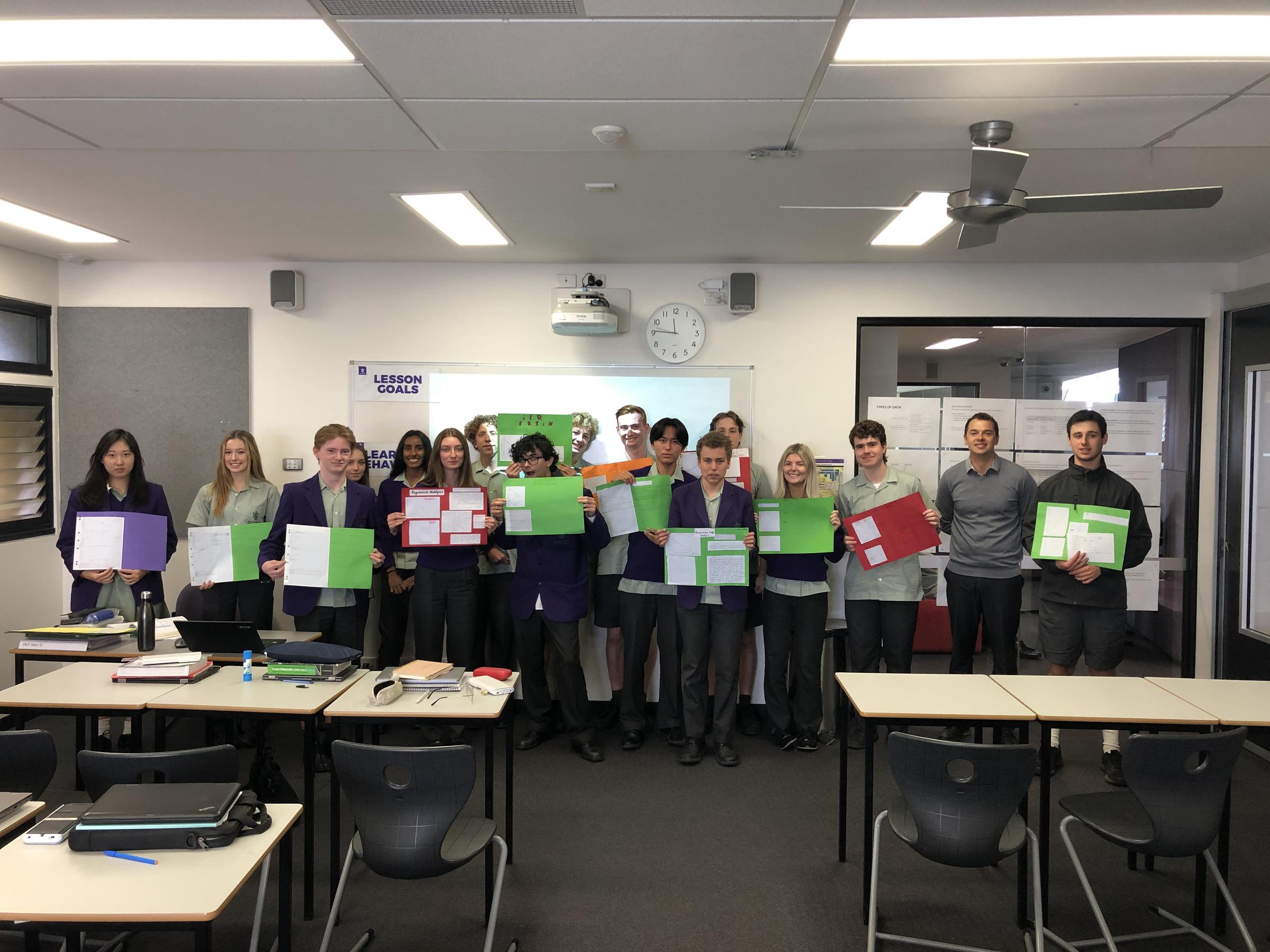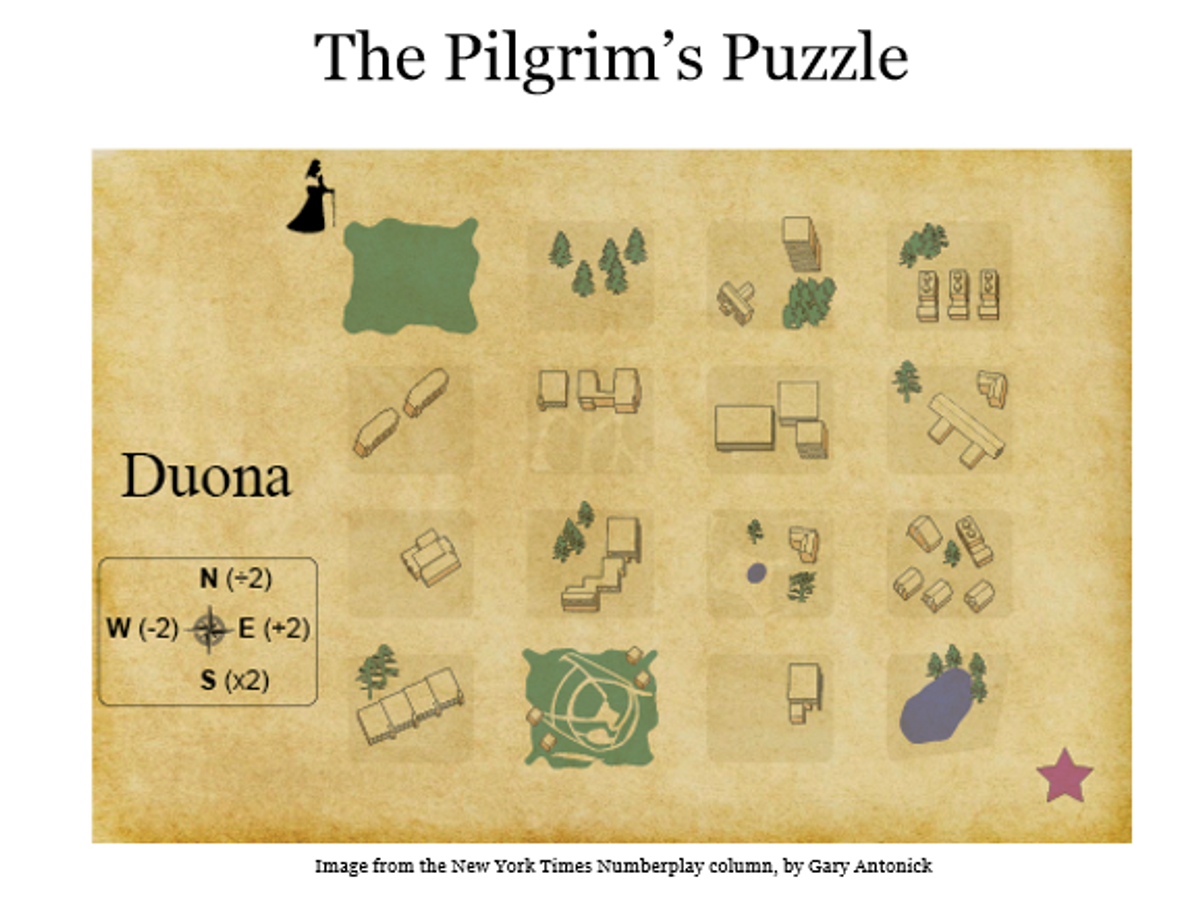MATHEMATICS/
NUMERACY

MATHEMATICS/
NUMERACY
Junior School
Earlier this term the Year 8 STEM class undertook the tricky challenge of the Pilgrim’s Puzzle. Set in Duona, a town with a unique tax system for visitors based on the direction they walk, a pilgrim wants to get from the northwest entry through to a shrine in the southeast without owing or gaining any silver (see image for town map along with a key showing the amounts of silver owed or gained for walking one block in each direction). They attempted to act out the problem and collaborate as a class to find a solution. While they were able to find some solutions that were better than others, the class was unable to figure out the ideal pathway for the pilgrim to travel. Think you can do better? Go to https://www.youtube.com/watch?v=6sBB-gRhfjE&t=8s for instructions on how to accept this challenge!
Senior School
You’ve probably heard of a Fibonacci sequence before. It’s a fairly simple number pattern that involves adding two consecutive terms to get the next one, resulting in the sequence 1, 1, 2, 3, 5, 8, … Our Year 11 General students have been exploring this and other sequences that are formed by a rule, specifically arithmetic (adding a set amount to each number to get the next number) and geometric (multiplying each number to get the next number). While they can be fun to create and identify, sequences that can be generated by a rule also allow us to make predictions in situations of growth and decay. Applications of this include natural arrangements such as the number of petals in a flower to financial scenarios like the expected return on investments or total interest to pay on loans.
Family Fun
Happy end of term! The answers to the last edition’s puzzles were “$18 ($4.50 per leg)” and “rectangle because it has the most letters”. Our holiday challenge involves a history dating back thousands of years and through a variety of cultures. Did you know that origami, the art of folding paper, has a close connection with mathematics? More complex origami patterns utilise geometry to determine crease patterns, accurate folding techniques, and how to create a variety of different shapes. In return, paper folding has also been used to prove and solve mathematical theorems and problems. There is a wide variety of origami patterns and instructions available online, and we encourage you to have a go at creating your own folded paper art these holidays. We would love to see and share what you make so please email a photo of your creations to Ms Benedetti

